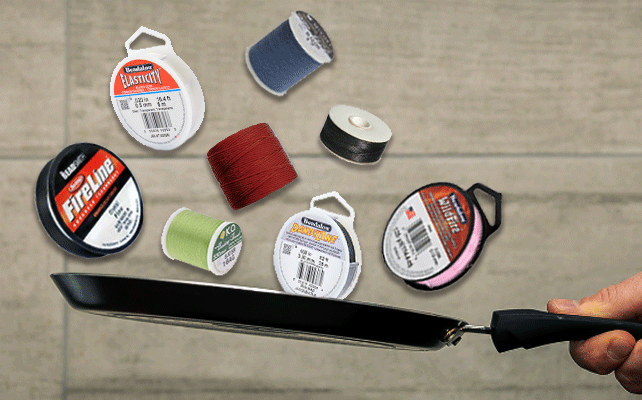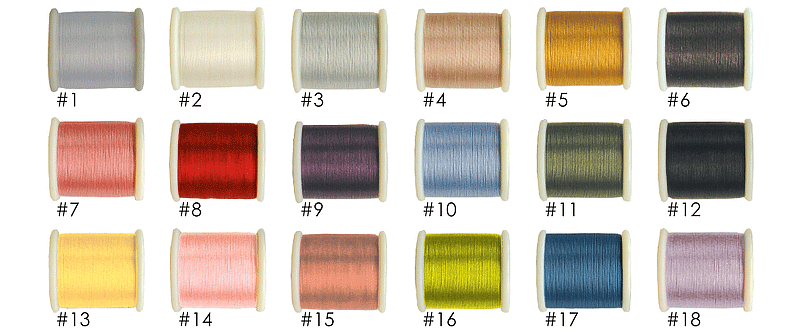| Choosing The Right Beading Threads and Cords KO and Miyuki Beading Thread by Damaris Ramenaden |
We think it's fair to say that most experienced beaders have come across KO thread before, even if they haven't personally used it. It has been a firm favourite for many designers and projects, due to how easy it is to find and use. However Miyuki beading thread is still fairly unknown to many, even though (spoiler alert) it is virtually identical to KO.
We've previously explored Miyuki beading thread, which you can read all about here
This time, we'll focus more on KO thread and its properties.
KO thread is made in Japan and was originally created by Japanese Master Beader, Sonoku Nozue, especially for the beading industry.
It is 100% pre-waxed single ply nylon, which creates a flat and smooth thread. It's virtually identical to Toho One G thread and similar in size to Nymo B; plus it's great for passing through the eye of a size 10 or 12 needle! You can also cut it using standard beading or embroidery scissors as it won't damage the blades.
KO beading thread comes in a range of 24 colour-fast colours, so it can be toned with any project colour palette. It knots tightly and is abrasion, tangle and fray resistant; if you use long wingspans of thread this is always welcome news! However, also bear in mind that KO thread does has an element of stretch to it, so we'd advise giving it a pre-stretch before you start using it (perhaps not so fun if you've got acres of long wingspans to stretch!).
Available on reels of 55 yards, it has a Tex number of 330 (remember this, it's the amount of grams per 1,000m of thread), it is strong and very soft and flexible to use. It's suitable for all off-loom bead stitches, as its diameter and structure lends itself to lots of thread passes through beads, lovely movement in pieces that need it (such as tassels and fringes) and just enough give when you add strain to a piece (think of how your beadwork moves when you slip a solid bangle on and off your wrist). We'd also suggest that, just like Nymo, KO thread is fine for the weft threads if you're looming, but due to the stretch don't use it for your warp threads.
Price wise, KO thread is mid-range - cheaper than Fireline and Wildfire but more expensive than Nymo and S-Lon D and this seems to suit its usability and quality too i.e. it's perfect for the more thread intense projects like Spiral stitch and right-Angle Weave. However if you're using crystals or bugles in these, just be cautious of sharp edges that can cut through the thread.
If we take a closer look at Miyuki beading thread, we'll see how similar it is to KO thread.
As we mentioned above, we have a full blog about Miyuki beading thread here, so we'll just give you the comparison highlights now.
Miyuki thread is also made in Japan and is a 100% nylon pre-waxed thread with a 330 Tex. Just like KO thread, it is abrasion, tangle and fray resistant and holds a knot really well, but is prone to stretching so you'll need to get your pre-stretching muscles working again.
Both Miyuki and KO can be pierced by a needle is you're not careful, but extra waxing can help take care of any tiny thread fluff that is created. You can cut it with normal scissors too, without fear of damaging them.
Miyuki thread has recently introduced 6 new colours to its range, taking it to 24 colours in total, and all available on 55 yard reels.
Similarly priced to KO thread, it is great for all the same sort of projects that KO works for, but again, be careful of beads with sharp edges or heavy beads that can cause extra stretch over time.
Hopefully you've guessed that there really is very little (if any) difference between these two threads, so they can be swapped and interchanged in your projects. They're both a great thread to have in your stash without breaking the bank and can create durable and strong pieces with multiple thread passes.
Whichever of these threads you favour, you're onto a winner!



